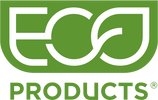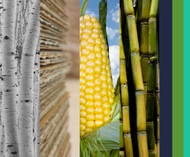The Benefits of Using Renewable Resources for Single-Use Foodservice Packaging
Posted by Eco-Products on Feb 13th 2025
As a society that leans heavily on convenience, it can be difficult to prioritize and seek out more sustainable packaging. With the fast-paced nature of our society and the high amounts of single-use items sent to landfills, the materials we choose to make these products from matters more than ever. While the world is gradually beginning to adopt more reusable systems, single-use products are still prevalent in a variety of operational settings. When reusable options aren’tfeasible, it’s crucial to consider using single-use products that offer environmental benefits.
Using responsibly sourced renewable resources to make food service packaging represents a responsible approach to resource use for theseitems and is consistent with principles of a circular economy.
The Value of Responsibly Sourced Renewable Raw Materials
Raw materials can have a significant effect on a product’s overall environmental impact, which is why it is important to pay close attention to what materials a product is made with.
Renewable resources are natural resources, like plants, that are not finite and can be grown again and again. Common renewable resources include plants like sugarcane, bamboo, corn, and tree fiber. As plants like this grow, they build upon CO2 already present in the atmosphere. Depending on the raw material and how it is grown and harvested, it may provide climate benefits by sequestering carbon from the atmosphere while still in plant form. And, depending on how they are manufactured and what other raw materials they are combined with, products made from renewable resources can be composted at the end of their useful life.
Non-renewable resources have none of these benefits and using them to create products that are designed to be used once and discarded into a system that is not set up to recover them is at odds with the principles of circularity, and results in excess waste.
No Perfect Option
All single-use packaging options have trade-offs, and no solution will come without some form of environmental impact. Recycling and composting infrastructure is dynamic, and product acceptance can vary, depending on what services a community has access to.
While recycling plays an important role in circular systems and can be part of the solution, recycling dirty, used, or soiled foodservice packaging isn’t always feasible, as food and food residue acts as a contaminant in the recycling process. Reuse systems are the ideal standard to strive for but are yet to reach full scale across the board. So, until we reach scalable reuse systems, composting makes sense for foodservice packaging. As long as a composter accepts compostable packaging, they’ll love the food residue that comes with it.
At the end of the day, what we do know is using responsibly sourced renewable resources for single-use foodservice items is a step in the right direction. As recovery infrastructure evolves, businesses and consumers have the opportunity to support systems that maximize resource recovery. The choices we make today – whether designing products, working to support the improvement of recovery systems, or by choosing the best disposal option available, all help to shape a stronger future for foodservice packaging made from responsibly sourced renewable resources.

